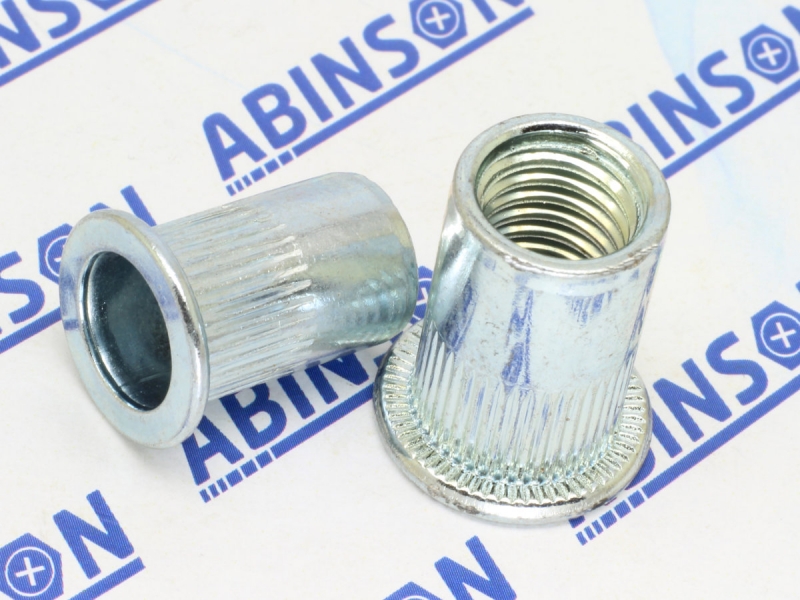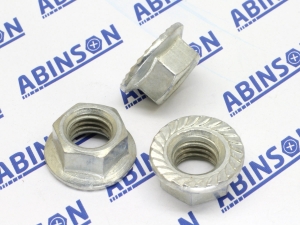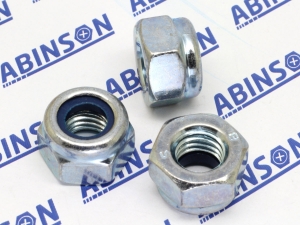Rivet Nut 10mm M10 x 1.5 Pitch
Dispatched same day if ordered before 1:00 PM (Excluding Sunday & National holidays), then courier normally takes 2-4 days.
Reduced countersunk (thin sheet) rivet nuts with a knurled body and open end are also commonly know as Rivnuts, Blind Nuts, Thin Sheet Nuts and Nutserts.
These rivet nut fasteners are a form of internally threaded insert and are used in applications where the material (wall) thickness is too small to tap a conventional thread, therefore by using rivet nuts a strong thread is created in thin sheets of material for high strength fastening from bolts and other threaded articles.
The open end style rivet nut allows the stud or male threaded component to thread through the rivet nut without limiting the length or protrusion of the male threaded part.
The knurled body of the reduced countersunk rivet nut provides increased resistance to turning in the application, especially when installed in softer materials.
The reduced countersunk head also known as thin sheet rivet nuts allows this type of rivet nut to be used in applications without any extra hole preparation, providing a low profile flush fit to the application. Enabling reduced countersunk rivet nuts to be installed in post-painted or pre-coated applications without damaging the surface.
These are installed using a special tool with a threaded stud (nose) that engages with the internal threads of the rivet nut an pulls upwards, in turn deforming the unthreaded section of the rivet nut to expand under the reverse side side of the material, providing a high strength permanent thread in a thin sheet material.

Installation

Rivet nut installation is a basically a three-step process.
Step 1–The user drills a hole into the material.
Step 2 –The mandrel on the installation tool attaches to the nut for insertion of the nut into the hole.
Step 3– The mandrel disengages from the nut, which has now formed a collar on the blind side of the workpiece.
Step 4 –The second material is set into place and a screw or bolt completes the assembly.
Rivet Nut Dimensions

Comes in Different Sizes

How to install rivet nut using special tool
Install Rivet Nut without special tool











